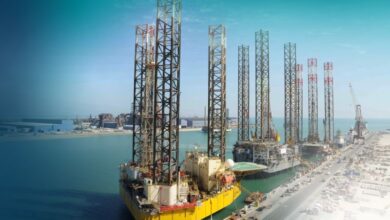To effectively manage major hazard events, companies must routinely measure key barriers, look beyond corrective actions at the front lines
By Peter Bridle, Pegasus Risk Management

The upstream industry must look beyond its traditional focus on personal injury metrics and retool toward a high-reliability organization (HRO) for effective major hazard event (MHE) management.
Fact 1: The US Chemical Safety Board (CSB) has repeatedly stated that although companies can work many years without a personal safety injury, this provides no guarantee that an MHE is any less likely.
Fact 2: On the day that control of the Macondo well was lost in 2010, executives from both the operator and drilling contractor were on the drilling rig congratulating the crews on having worked seven years without a lost-time injury (LTI).
Fact 3: Focusing on and reducing the number of minor injuries, such as first-aid cases, does little to nothing to demonstrate the availability or integrity of principal barriers for effective MHE management.
Fact 4: Prior to the Macondo incident, the operator and drilling contractor had already fulfilled the majority of the Safety and Environment Management System (SEMS) requirements that the US Bureau of Safety and Environmental Enforcement put in place in the aftermath of the incident to prevent future reoccurrence.
Fact 5: The CSB has stated in response to the events of 2010 that “in the aftermath of a catastrophe, the individuals immediately involved in the event seem to receive much of the focus and subsequent blame, even though the underlying problems inevitably rest with the overall operating culture and organizational practices of the company.”
Background
In light of these facts, you might think that the upstream industry – in conjunction with many other higher-risk industries – has recognized and conceded that, in many ways, it has effectively been “barking up the wrong tree” with regard to MHE management.
You might also think that in the years since the Macondo incident, the upstream industry has been developing new metrics and new ways of work in order to reduce the likelihood for a similar incident to occur to as low as reasonably practicable.
However, fundamentally redirecting and retooling an entire industry is not easy. Effective MHE management cannot simply be achieved by changing the actions of a single work party, nor even introducing behavioral modification programs to target worksite employees. Effective MHE management is a companywide action. Starting at the highest level, the organization must galvanize itself around a single “line of sight,” engaging and motivating all employees, at all levels, to become knowledgeable of the work they’re performing as it pertains to the prevention of catastrophic events.\
In essence, to become competent in defining and managing safety-critical activities (i.e., those things necessary to support the availability and integrity of key barriers), all work must be progressed against the backdrop of an HRO.
HROs
There are many excellent reference sources available for outlining the origins, characteristics and benefits of an HRO, such as “Managing the Unexpected” (Weick, K. E., & Sutcliffe, K.M. 2007). However, its definition is quite straightforward. An HRO is an organization that has succeeded in minimizing catastrophes in an environment where incidents can be expected due to certain risk factors and complexity.
However, unlike personal safety, where organizations often turn to the worksite for answers, embedding the characteristics of an HRO within a company’s operating culture requires effective direction, engagement and accountability from the C-suite. Employees on the front lines shouldn’t be expected to be able to retool organizational objectives and how they go about their day-to-day operating practices. This must and can only come from the highest levels of the organization because it impacts all levels of the organization.
Therefore, if an organization experiences significant challenges in demonstrating the integrity and availability of key barriers as part of MHE management, then focusing on the worksite and implementing isolated and limited corrective actions simply won’t be effective.
Effective MHE management requires that the whole organization be made more accountable and work collectively to address challenges that are often systemic, far reaching and well-established. In an HRO culture, reports concerning barrier integrity are given top priority and are seen as an organizational failure, rather than a limited and isolated misstep at the worksite.
In other words, once an organization moves toward becoming an HRO for effective MHE management, the metrics used to measure performance have to proportionately move from simply focusing on the worksite to a much wider field of view that encompasses the decisions and actions of the entire organization.
Ultimately, this necessitates a visit to the top half of the organization. Executives and senior managers will be on the hook for the effectiveness of the metrics chosen – not just in terms of what gets measured and what gets rewarded but also in gauging overall progress toward becoming an HRO.
The Way Forward
So, how can the upstream industry take pragmatic steps to move away from its traditional focus on workplace injuries and personal safety to achieve a meaningful step-change in MHE management? The first step is to recognize that low-consequence, high-frequency incidents involving workplace injuries provide numerous data points, but high-consequence, low-frequency incidents (MHEs) do not. Therefore, organizations must fundamentally change the way they respond to these two different categories of incidents.
Incidents involving catastrophic loss are rarely, if ever, due to the actions of one or two individuals. They involve complex situations with multiple lines of defense, managed at all levels of the organization. Simply saying that a company has gone for X number of years without a catastrophic incident – in the way achievements for personal safety are framed – is not helpful. If an MHE occurs just one time, it may be sufficient to put the organization out of business.
The first thing that is needed in redirecting an organization’s focus away from workplace injuries is to generate meaningful data points. For instance, if every time a barrier was unavailable, compromised or failed to function (as per design), then this should generate an important data point. In fact, depending on the seriousness of the failure and the criticality of the barrier itself, this single data point should probably be seen with the same level of seriousness as an LTI. This is regardless of the fact that other barriers may have performed as intended to prevent escalation.
It would be reasonable to presume that a personal safety incident would likely get reported regardless of whether personal protective equipment may have performed as intended and prevented actual injury. This allows effective barrier management to be discussed at the highest levels of the organization more consistently, assuming that an LTI routinely gets reported to the C-suite.
This should especially be the case where barrier integrity/availability is related to human performance. For instance, an organization would know it has certain human performance challenges due to data points that might say: “From the last six months of management walk-through’s, findings have revealed that over 50% of the time, employees are not strictly adhering to documented procedures for work being performed on critical barriers.”
In other words, for more than 50% of the time, the organization lost control of the work flow because it didn’t know how the work was being executed. If you overlay this fact onto high-stress environments, such as downtime, or unusual and unfamiliar situations, then deviations from expected ways of work become not only more apparent but may become the new normal. This is especially true if no negative outcomes, such as a near-miss, are incurred. As a result, further barrier degradation may follow.
If organizations are serious about moving toward more effective MHE management, they must routinely measure and monitor the integrity and availability of key barriers. They must do this in such a way that every barrier failure or degradation receives the same intense scrutiny as a serious personal workplace injury. However, there is one caveat: The organization must also accept and recognize that barrier failure in an HRO culture looks toward all levels of the organization – not just one or two individuals at the worksite.
If nothing more, such a first step gets the conversation going about the right issues at the right level. At this juncture, where new data points generate new understanding, the industry can take a meaningful step in the right direction. DC




